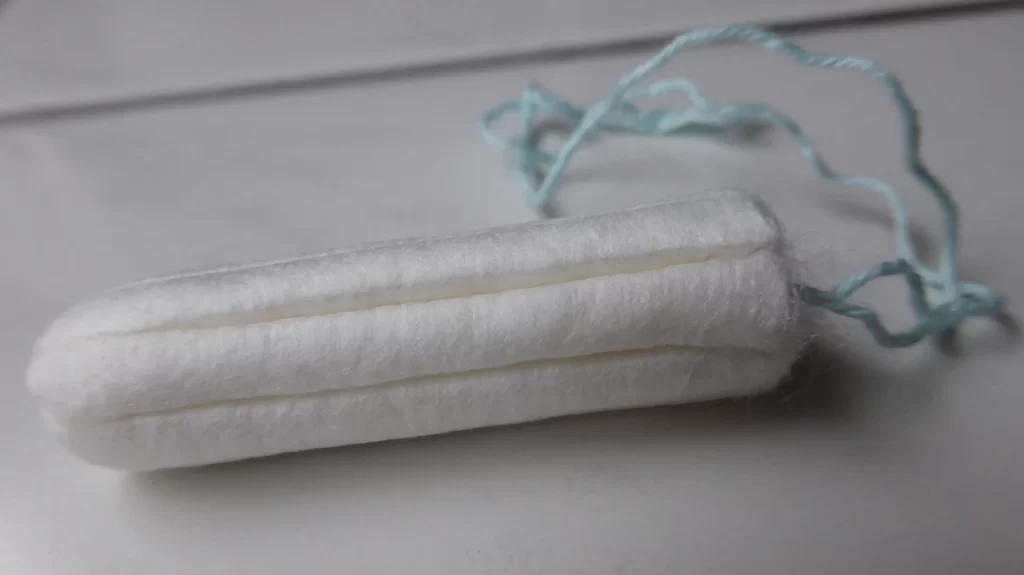Tampons are a sort of feminine hygiene item that people who are menstruating use to control their menstrual flow. They are tiny, cylindrical objects that are put into the vagina during menstruation and are made of absorbent materials like cotton or rayon. Tampons’ primary function is to absorb menstrual blood and stop it from dripping outside the body.
The History of Tampons
In the 1930s, American doctor Dr. Earle Haas created the modern tampon as we know it today. He and his business partner Gertrude Tendrich founded the Tampax corporation in 1936 after receiving the patent.
The product initially encountered social taboos and distrust, but over time it progressively gained recognition and popularity. As one of the top producers of menstruation products, Tampax significantly contributed to the acceptance of the use of tampons in period hygiene routines.
Types Of Tampons
The two primary varieties of tampons that you should know are applicator tampons and non-applicator tampons. Each variety has distinct qualities and advantages. These two types are broken out as follows:
1. Applicator Tampons
These tampons have a cardboard or plastic applicator that makes insertion easier. The tampon is held by the applicator, which also aids in guiding it into the vaginal canal. Within applicator tampons, there are two variations:
Tampons with a Smooth Plastic Applicator: These tampons have a smooth plastic applicator, which for some people makes insertion simpler and more comfortable. When it comes into touch with menstrual fluid, the absorbent tampon, which is commonly made of cotton, swells.
Tampons with a Biodegradable Cardboard Applicator: These tampons have an applicator made of biodegradable cardboard. The cardboard applicator helps with implantation just like plastic applicators do. Generally speaking, the tampon is constructed of the same absorbent substance as plastic applicator tampons.
Advantages Of Applicator Tampons
- Some people might find it simpler to insert, especially if they’ve never used tampons before.
- It has reduced insertion time, contact with fingers, and menstrual blood.
- The applicator surface is smooth hence it promotes comfort
2. Tampons Without an Applicator (Digital Tampons):
Tampons with no applicator are frequently referred to as digital tampons. The fingers are used to insert them into the vaginal canal. The majority of non-applicator tampons have a cylindrical shape and are constructed of an absorbent substance.
Advantages of Non-Applicator Tampons
- Environmental friendliness: Since non-applicator tampons don’t need disposable applicators, they produce less waste.
- These tampons are perfect for use when traveling because they are lightweight and portable.
Factors to Take into Account When Selecting the Type of Tampon
- Comfort: Some people like the control of non-applicator tampons while others enjoy the convenience of insertion with applicator tampons.
- Environmental impact: Since non-applicator tampons generate less waste, they are typically thought of as being more environmentally friendly.
- Personal preference: Whether you prefer to use your fingers or an applicator to insert tampons will depend on how comfortable you are doing so.
It’s crucial to remember that controlling menstrual flow is the primary function of both varieties of tampons. Individual tastes, comfort, and environmental concerns ultimately determine whether to use applicator or non-applicator tampons.
How Tampons Work
Usually, absorbent materials like cotton or a mix of natural and synthetic fibers are used to make tampons. These substances are capable of rapidly absorbing and holding a sizable volume of liquid, in this case, menstrual blood.
The tampon is placed into the vaginal canal and it starts to absorb menstrual fluid as soon as it is placed into the vaginal canal. As soon as the tampon comes into touch with blood, its fibers inflate and spread out. The tampon’s ability to contain menstrual fluid without leaking is due to this expansion.
The tampon forms a barrier that aids in preventing menstrual blood flow when it stretches to suit the vaginal canal. In order to guarantee that the tampon can successfully regulate your menstrual flow without becoming saturated too quickly, it’s critical to select the appropriate absorbency level based on your flow.
How to Use Tampons
When using tampons for the first time, it could seem a little intimidating, but with time and patience, it gets easier. Here is a detailed explanation of how to use tampons:
- Select the appropriate tampon: Tampons are available in a range of absorbency levels, which are typically denoted on the packaging in different sizes or colors. Start with a lighter absorbency (such as regular or light) if your flow is light. Choose a higher absorbency (such as super or super plus) if your flow is heavier. To reduce leaks and the chance of developing Toxic Shock Syndrome (TSS-a rare but potentially life-threatening medical condition that can result from a bacterial infection), the appropriate absorbency must be used.
- Wash your hands thoroughly with soap and water before handling the tampon to lower the risk of contaminating it with bacteria.
- Find a comfortable position: Take a seat comfortably before inserting the tampon. Many people find it more comfortable to either stand with one leg elevated on the toilet seat or bathtub ledge or sit on the toilet with their knees apart.
- Remove the tampon from its box, being careful not to touch the tip with your fingers (this is where it will be put). The majority of tampons feature an applicator for simpler insertion.
- Hold the tampon appropriately. If your tampon has an applicator, grasp it at the grip with your thumb and middle finger. The string’s little, rounded end needs to be pointing downward.
- Place the tampon: With your free hand, gently spread the labia (the folds of skin surrounding the vaginal opening) to reveal the opening. Put the rounded end of the tampon slowly and slightly upwardly into the vagina. Try relaxing your muscles or changing the angle if you encounter any resistance or discomfort. Up until your fingertips touch the applicator’s grip, keep inserting.
- Insert the tampon: Slide the tampon into the vagina by inserting your index finger into the applicator’s inner tube. You shouldn’t be able to feel the tampon anymore if it has been inserted far enough.
- Take out the applicator: After inserting the tampon, gently take out the applicator. Check to see that the string is not dangling into the vagina. The tampon is later taken out using the string.
- Verify comfort: When the tampon is put properly, you shouldn’t feel it. If you experience discomfort, it may not be positioned properly or may not be far enough in. You might try putting in a fresh tampon or adjusting the one you already have.
- Get rid of the applicator and packaging: Put the applicator and package of the tampon in the trash in a proper manner. Never put them in the toilet because doing so could damage the pipes.
- Regularly replace your tampons: Depending on your flow, you should change your tampons every 4 to 8 hours. A tampon should not be left in for too long in order to lower the risk of TSS.
- Tampon removal: When it’s time to take the tampon out, wash your hands once more, unwind your muscles, and delicately pull the thread down and out of the vagina. Put the discarded tampon in the garbage after using it.
Keep in mind that getting used to wearing tampons may take some time. If you’re experiencing trouble or have anxiety when using them, think about speaking with a dependable family member, friend, or healthcare provider for advice and assistance.
How many tampons should you use per day?
Your menstrual flow, which varies from person to person and throughout the course of your menstrual cycle, will determine how many tampons you should use each day. To maintain good cleanliness and lower your chance of developing Toxic Shock Syndrome (TSS), you must change your tampons frequently.
According to your flow, here are some general recommendations for how frequently you might need to replace your tampon:
- Light Flow: If your period flow is really light, you could only require two to three tampon changes each day.
- Moderate Flow: You should probably change your every four to six hours if your flow is moderate.
- Heavy Flow: You might need to change your every two to four hours on days with heavy flow.
The Take-Home
Tampons are essential in enabling people to control their menstrual periods in a way that is comfortable, convenient, and self-assured. They have undergone a complex historical history, going from simple designs to the inventive and varied ones available today.
People can make decisions that are in line with their preferences and values, whether it be through the simplicity of applicator tampons or the environmental awareness of non-applicator alternatives. The physics of tampon absorption ensures that these items successfully solve the difficulties of menstrual flow while offering the comfort and protection required, along with suitable usage procedures.
In essence, tampons represent a wider trend toward self-care, body positivity, and environmental responsibility in addition to being a useful answer.



Thank you